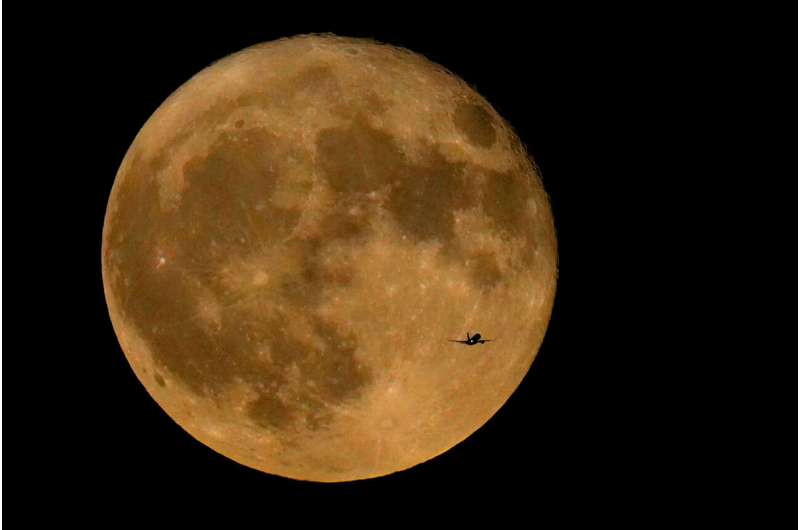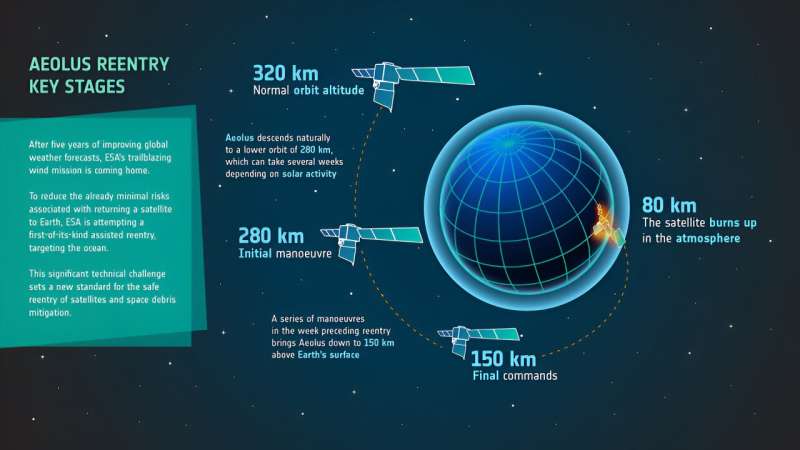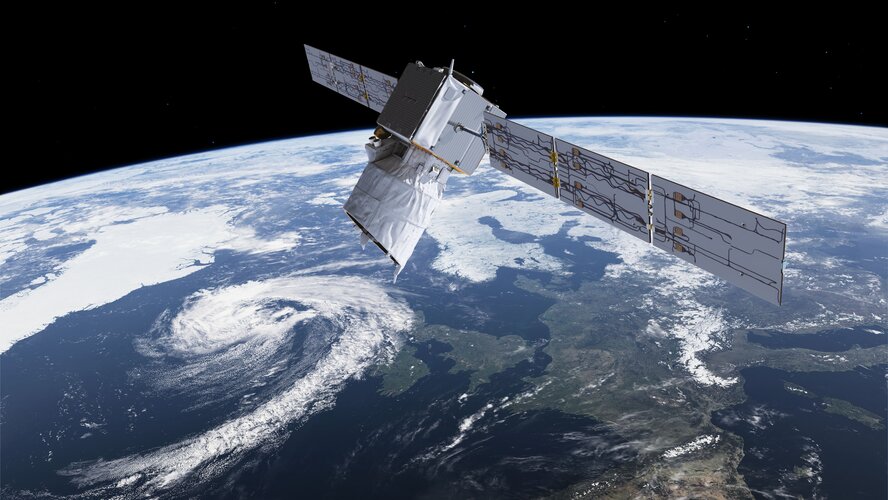
Copernical Team
Two supermoons in August mean double the stargazing fun

European wind-mapping satellite returned safely to Earth

A European wind-mapping satellite has returned successfully to Earth following a delicate assisted return designed to minimize damage from flying debris, the European Space Agency said on Saturday.
It is the first time ESA's mission control had attempted an assisted re-entry through the planet's atmosphere.
The Aeolus satellite—named after the guardian of wind in Greek mythology—was launched in 2018 to measure Earth's global wind patterns, and thus improve both short-term weather forecasting and our understanding of man-made climate change.
"Surpassing scientific expectations and exceeding its planned life in orbit, the Aeolus wind mission has been hailed as one of ESA's most successful Earth observation missions," the agency said on its website.
"And now, its end will go down in history too, thanks to the ingenuity of the agency's mission control team, who guided this remarkable satellite down to Earth's atmosphere for a safe reentry."
The one-ton satellite re-entered the atmosphere above Antarctica at around 02:00 GMT on Saturday, after several days of complex maneuvers, it added.
These lowered its orbit from its operating altitude of 320 kilometers (200 miles) to 120 kilometers so it could re-enter the atmosphere and burn up safely.
The world's largest ComSat ever built launches on a SpaceX Falcon Heavy rocket
 SpaceX's Falcon Heavy rocket, launched for the seventh time, was scheduled to lift off on July 26th at 11:04 p.m. EDT, a violation of abort criteria has forced the mission to be scrubbed with 1 minute and 5 seconds left on the clock.
The company had to delay the mission from July 27th "To complete vehicle checkouts".
Hughes Network Systems's Jupiter 3/EchoStar XXIV satellite launched
SpaceX's Falcon Heavy rocket, launched for the seventh time, was scheduled to lift off on July 26th at 11:04 p.m. EDT, a violation of abort criteria has forced the mission to be scrubbed with 1 minute and 5 seconds left on the clock.
The company had to delay the mission from July 27th "To complete vehicle checkouts".
Hughes Network Systems's Jupiter 3/EchoStar XXIV satellite launched Historic Aeolus reentry – how it happened

Historic Aeolus reentry – how it happened
Get rolling updates on the Aeolus reentry, on the Rocket Science blog
Aeolus: a historic end to a trailblazing mission

Surpassing scientific expectations and exceeding its planned life in orbit, the Aeolus wind mission has been hailed as one of ESA’s most successful Earth observation missions. And now, its end will go down in history too, thanks to the ingenuity of the Agency’s mission control team who guided this remarkable satellite down to Earth’s atmosphere for a safe reentry.
Aeolus control team wraps up successful reentry operations
 Image:
Aeolus control team wraps up successful reentry operations
Image:
Aeolus control team wraps up successful reentry operations Iridium Board of Directors approves additional share repurchase program
 Iridium Communications Inc. (Nasdaq: IRDM) reported Thursday that its Board of Directors has authorized the repurchase of an additional $400 million of Iridium common stock through December 31, 2025.
This is the third stock repurchase authorization from the Board of Directors in the past three years and brings the total value of the program to $1 billion. This $400 million authorization is
Iridium Communications Inc. (Nasdaq: IRDM) reported Thursday that its Board of Directors has authorized the repurchase of an additional $400 million of Iridium common stock through December 31, 2025.
This is the third stock repurchase authorization from the Board of Directors in the past three years and brings the total value of the program to $1 billion. This $400 million authorization is Beyond Gravity to provide off-the-shelf computer to Quantum Space's Ranger multi-purpose vehicle
 Beyond Gravity, a leading supplier to the space industry, will provide its constellation On Board Computer (cOBC) to Quantum Space's inaugural flight of its Ranger multi-purpose vehicle, which will take payloads to geostationary and cislunar orbits.
Beyond Gravity, a leading supplier to the space industry, has announced it will provide its constellation On Board Computer (cOBC) to Quantum
Beyond Gravity, a leading supplier to the space industry, will provide its constellation On Board Computer (cOBC) to Quantum Space's inaugural flight of its Ranger multi-purpose vehicle, which will take payloads to geostationary and cislunar orbits.
Beyond Gravity, a leading supplier to the space industry, has announced it will provide its constellation On Board Computer (cOBC) to Quantum Historic MWA milestone reached as we go 'back to the future' in the cosmos
 A world-class telescope in outback Western Australia is on the verge of unlocking more secrets from the start of the Universe as new technology upgrades are rolled out during its historic 10-year anniversary. The Murchison Widefield Array (MWA) project, a powerful telescope made up of 8,192 antennas spread across more than 30sqkm on Wajarri Yamatji land, about 300km north-east of Geraldton, is c
A world-class telescope in outback Western Australia is on the verge of unlocking more secrets from the start of the Universe as new technology upgrades are rolled out during its historic 10-year anniversary. The Murchison Widefield Array (MWA) project, a powerful telescope made up of 8,192 antennas spread across more than 30sqkm on Wajarri Yamatji land, about 300km north-east of Geraldton, is c 

